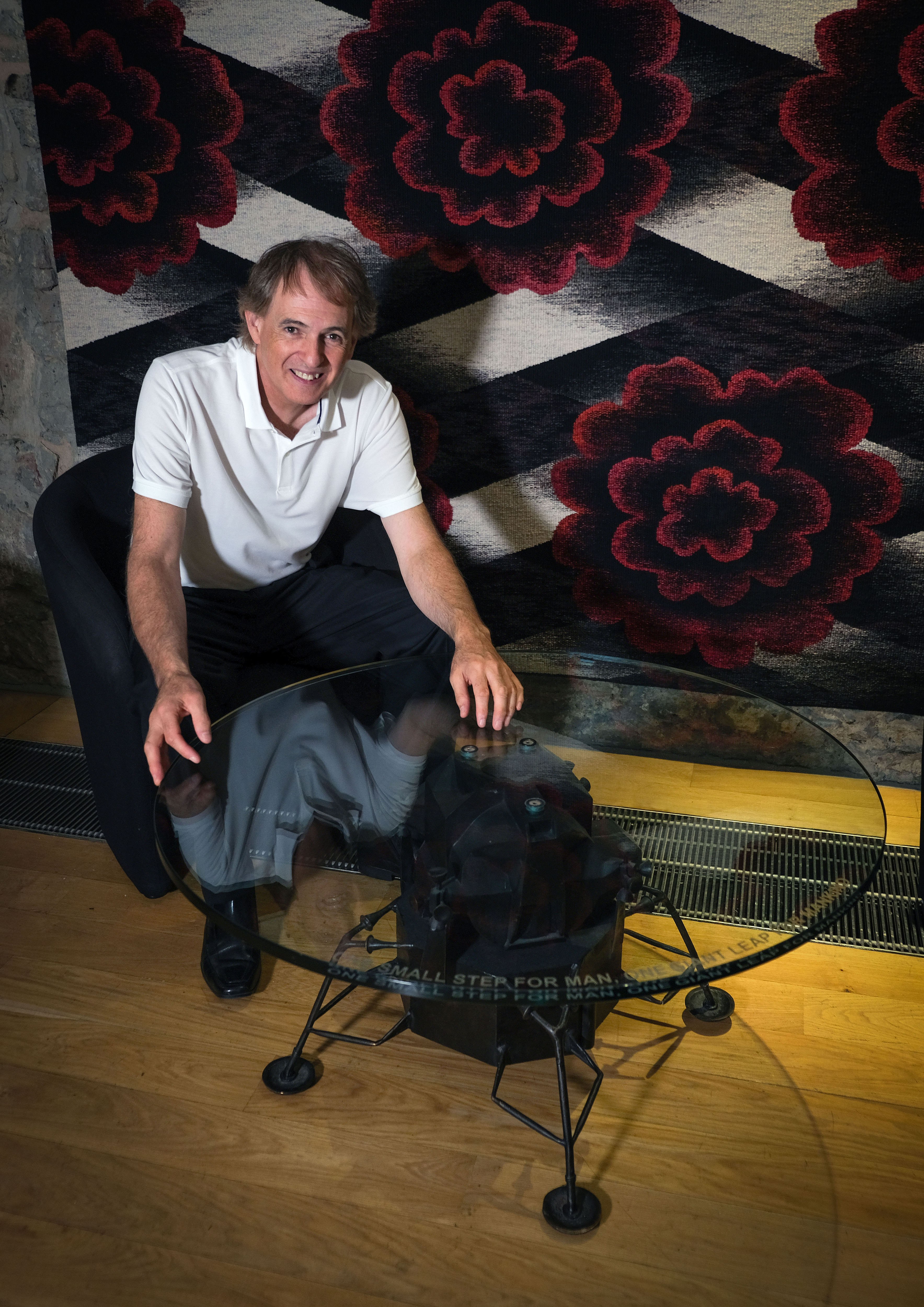
Scots’ lunar legacy is celebrated fifty years on
Fifty years ago, astronauts Neil Armstrong and Buzz Aldrin stepped out onto the surface of the moon.
However, few people know that without Scottish ingenuity, the greatest moment in space history might never have happened at all.
Now one man – the internationally acclaimed artist and designer Mark Stoddart – wants the records to show just how important Scotland was in the race to the moon.
He said: ‘Very few people realise the role played by Scottish mathematician John Napier who, in 1614, published his work on logarithms, laying the foundations for modern computing – and NASA relied heavily on logarithms for complex moon landing and orbit calculations.
‘Aberdonian Alexander Bain invented and patented the first fax machine in 1843, 33 years before another Scot, Alexander Graham Bell patented the telephone (1876). Both men revolutionised communications.
‘John Logie Baird pioneered television in 1926 on which millions around the world watched the momentous images after the Eagle had landed.
‘There’s no question that without these important innovations man might never have landed on the lunar surface, or been able to send images back to earth, let alone stay in touch with Mission Control.’
Mark should know, as one of his friends and clients is Buzz Aldrin, who also walked on the moon, and owner of a stunning lunar module table, designed and created by Mark.
An identical table was owned by astronomer Sir Patrick Moore and this featured on the 700th anniversary Sky at Night programme on BBC television.

Artist and designer Mark Stoddart at Scottish Parliament with a one of his special tables
A third table is on permanent display at the members’ bar at the Scottish Parliament in Edinburgh.
The design was inspired by the Apollo 11 mission to the moon and features an extra thick glass top to represent the thick glass in the Eagle’s lunar module and hexagonal bolts, matching those used to construct it.
Mark explained: ‘The underneath of the glass top is etched with: “One small step for man, one giant leap for mankind” and the phrase and the description “magnificent desolation”, which is how Buzz described the lunar surface.
‘The edge of the glass is polished in a special way to allow the writing to show through in 3D and when light hits the edge of the glass the writing is reflected on the floor surface.’
When he received the table, Buzz told Mark: ‘I’m just overjoyed to have this in my house. It really is a magnificent piece of art and brings back so many amazing
memories. I’m actually over the moon!’
Buzz recently loaned the table to the Smithsonian in Washington for the 100 year anniversary of aviation.
Mark continued: ‘It wasn’t just the Apollo missions that inspired me. It was the underlying Scottish connection.
‘For instance, I was fascinated to learn that Neil Armstrong had Scottish roots traced to the village of Langholm in Dumfries and Galloway, and that he became the first and only Freeman of the town. He also took a piece of tartan to the moon and was a keen links golfer.
‘Buzz Aldrin also has ancestral connections to Scotland on his mother’s side.
‘My mission is simpler and safer. I’d like the pioneering Scots, whose work in communications was so vital to the NASA space programme, to be recognised as during the 50th lunar landing celebrations on 20 July.
‘I’m incredibly proud that Scottish knowledge, skills and innovation helped underpin and propel the Apollo space missions.
‘This reflects the important global role Scots have played in science, technology, engineering and mathematics for hundreds of years.
‘As we look to infinity and beyond, I’m confident this proud Scottish contribution will continue, especially as spaceports and space travel tourism become a reality and
that we will all continue to reach for the stars.
‘We may only be a wee country, but we played a huge role in making those first small step on the moon in 1969!’
TAGS

